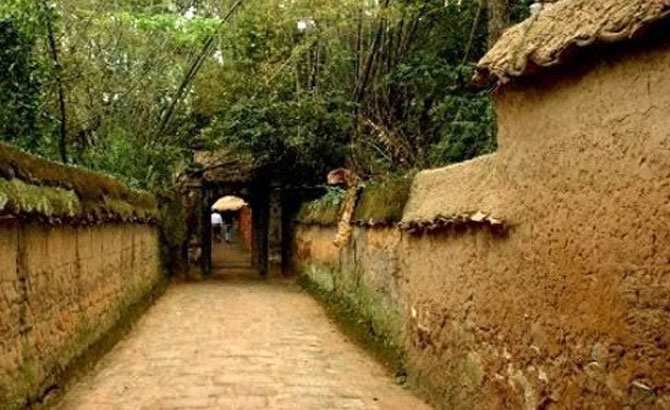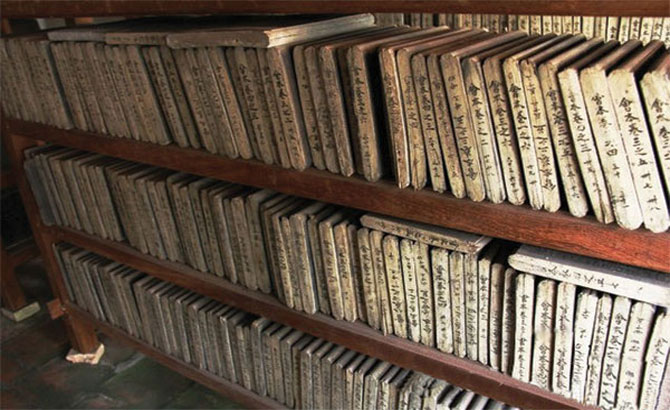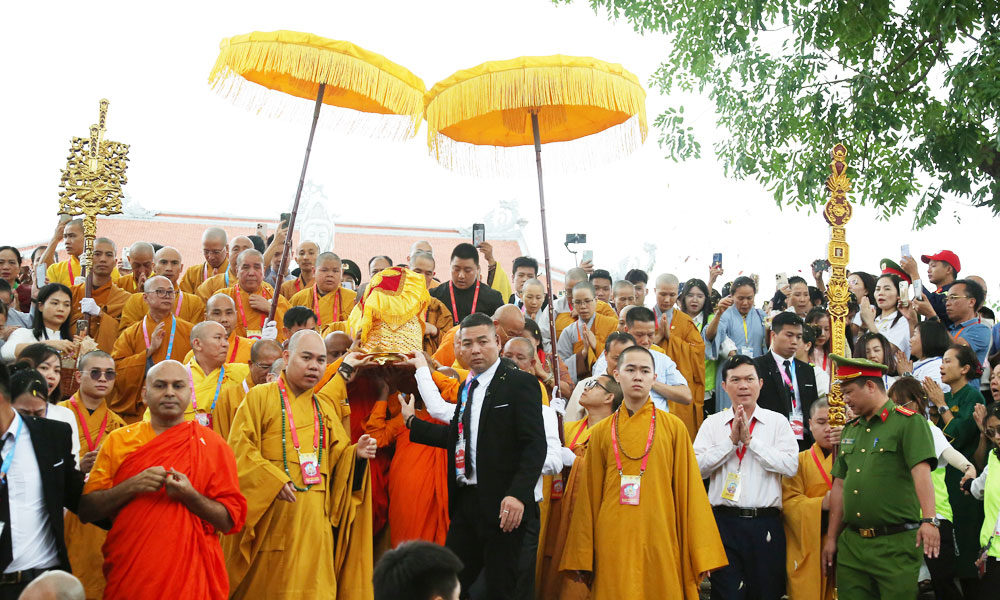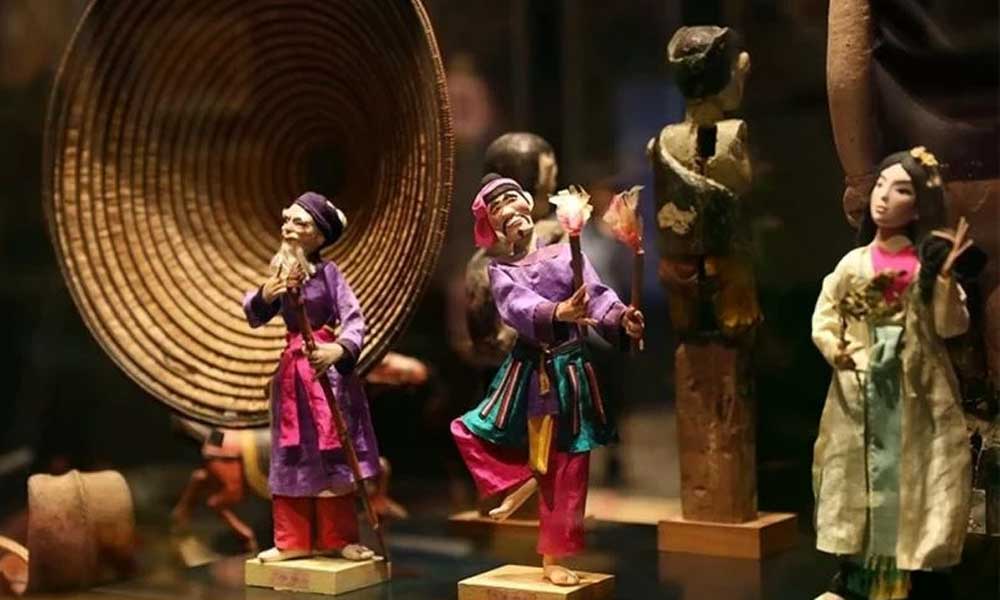Buddhist woodblock repository on Phuong Hoang mountain

|
| The gate of Bo Da pagoda. |
From atop Phuong Hoang mountain, Bo Da merges into the natural landscape of Tien Son in a charming manner. Located far from residential areas, it is fairly quiet. Before arriving in Bo Da, we were briefed about the basic characteristics of the pagoda, but upon arrival, we found that the phrase "North is Bo Da, South is Huong Tich" was true. Bo Da pagoda was built in the 11th century during the Ly dynasty when Buddhism was in its prosperity. Seven centuries of war devastated the pagoda. During the reign of King Le Du Tong (1705-1729) who took the dynastic title of Bao Thai, the pagoda was reconstructed with its shape intact today.
Lying north of the foot of Phuong Hoang mountain, Bo Da is one of the only three pagodas worshiping Avalokiteshvara Bodhisattva in the North. According to Venerable Tuc Vinh, the pagoda was built on the chest of a phoenix. The place of worship and the pagoda’s premise were carefully taken into account on the basis of feng shui, geographical and yin and yang elements.
In order to enter the pagoda, one must pass through three wooden and narrow gates with round arches, both sides of which are adorned with parallel sentences. The four surfaces are surrounded by two metre tall and 0.5m thick walls. The walls are built made of clay mixed with straw and pebbles, helping them remain solid after hundreds of years.

|
|
Woodblock repository in Bo Da pagoda. |
Since its construction, Bo Da has trained monks and nuns for pagodas in the North. Every summer, monks and nuns all over the country flock to the pagoda to study Buddhist teachings and improve themselves. The sound of bells and prayer recitals can be heard across the area.
Luckily, we had the opportunity to see a hand-written letter by late writer Nguyen Hong in the lobby of the relic management board. The elderly man who lived near the pagoda recalled that after the August Revolution the writer fled his home and isolated himself to look for a spiritual place. He became vegan, prayed to Buddha and shook off all concerns of the outside world, but his affinity with the Buddha lasted only six months. When his third wife in Yen The came to make an offering, she accidentally met her husband, so the writer was forced to return.
Just behind the woodblocks at Vinh Nghiem pagoda (3,050 copies), the repository of Buddhist scriptures at Bo Da amount to 2,000 copies, which are engraved on the wood, are still intact.
Over the past three centuries, the patterns and embossed texts on the wooden planks are still sharp and termite-free. As well as text the artisans carved sophisticated images on the planks. Images of Tathagata Buddha, Shakyamuni on the lotus, the Bodhisattva Avalokitesvara and the Arhat feature on many planks.
The Buddhist scriptures at Vinh Nghiem pagoda are of the Mahayana school and some belong to the thoughts of Truc Lam Yen Tu Zen. Meanwhile, the Buddhist sutras at Bo Da pagoda mainly talk about Avalokitesvara Bodhisattva and precepts.
Venerable Tu Tuc Vinh said, shortly after constructing the pagoda, the patriarchs planned to carve a set of scriptures to spread Buddhist teachings extensively and hand them down to the generations. They were carved by local artisans for years. In terms of sophistication, the carving skill of Buddhist sutras at Bo Da pagoda is comparable with the sculpture of Buddha statues at Tay Phuong pagoda. They are just as meticulous as woodblocks at Vinh Nghiem pagoda. Engraved on the wood in Chinese characters, every detail of the these engravings is still intact, including texts and drawings that tell the stories of Buddhas and santas about commandments during the practice. Monks and nuns also looked to austerity and self-improvement during the process of reaching nirvana. In addition, the scriptures also focus on the fundamentals of Buddhism with three sects (Zen, Pure Land and Tantrism) in the process of acculturation and inheritance in Vietnam.
The 300-year history of the scriptures is not the oldest, and the number of woodblocks is not the largest but in terms of the content, this is a repository of valuable materials for the study of Buddhism history.
Each carved plank is on average 50cm long, 25cm wide, 2.5cm thick, shining black. All the woodblocks were neatly arranged on eight wooden shelves in the pagoda where visitors can see them firsthand. If one wants to view all the old scriptures, a site of nearly 250 sq.m is needed to spread them all out. The wood must be durable, lightweight and easy to carve, but porous and free of termites.
Visitors to Bo Da should not miss the opportunity to contemplate the 300-year old works. They are not only the sole property of the pagoda but also a treasure of Vietnamese Buddhism./.
 Bắc Ninh
Bắc Ninh








Reader's comments (0)